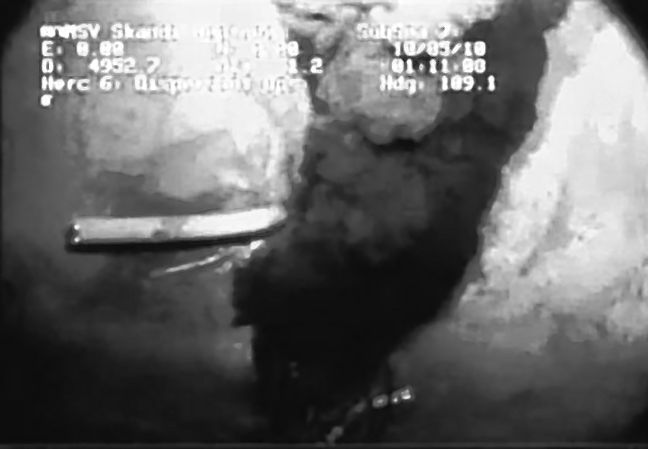ROBERT, La. – It will be at least Tuesday before engineers can shoot mud into a blown-out well at the bottom of the Gulf of Mexico, BP said Friday in yet another delay in the monthlong effort to stop the oil that is now washing into wetlands and onto at least one public beach.
A so-called “top kill” has been tried on land but never 5,000 feet underwater, so scientists and engineers have spent the past week preparing and taking measurements to make sure it will stop the oil that has been spewing into the sea for a month. They originally hoped to try it as early as this weekend.
BP spokesman Tom Mueller said there was no snag in the preparations, but that the company must get equipment in place and finish tests before the procedure can begin. BP already has three deep-water rigs and other equipment near the blown-out well.
“It’s taking time to get everything set up,” he said. “They’re taking their time. It’s never been done before. We’ve got to make sure everything is right.”
Crews will shoot heavy mud into a crippled piece of equipment atop the well, which started spewing after the drilling rig Deepwater Horizon exploded April 20 off the Louisiana coast, killing 11 workers. Then engineers will direct cement at the well to permanently stop the oil.
BP PLC, which was leasing the rig and is responsible for the cleanup, has tried and failed several times to halt the oil.
Chief Operating Officer Doug Suttles said Friday that a mile-long tube inserted into the leaking pipe is sucking about 92,400 gallons of oil a day to the surface, a figure much lower than the 210,000 gallons a day the company said the tube was sucking up Thursday. Suttles said the higher number is the most the tube has been sucking up at any one time, while the lower number is the average.
The company has conceded that more oil is leaking than its initial estimate of 210,000 gallons a day total, and a government team is working to get a handle on exactly how much is flowing. Even under the most conservative estimate, about 6 million gallons have leaked so far, more than half the amount spilled by the Exxon Valdez in 1989.
In Grand Isle, south of New Orleans, officials were forced to close a public beach as globs of oil washed up.
Oil was appearing in various forms — light sheens, orange-colored splotches and heavier brown sheets — said Chris Roberts, a local official who surveyed the area Friday morning.
“It’s difficult to clean up when you haven’t stopped the source,” said Roberts, a councilman for Jefferson Parish, which stretches from the New Orleans metropolitan area to the coast. “You can scrape it off the beach, but it’s coming right back.”
The island thrives in the summer on sport fishermen and beachcombers, and the warm Gulf waters off its shores are home to a variety of sport fish.
Dodie Vegas estimated that business at her family-owned Bridge Side Cabins and Marina was down about 60 percent. If the oil forces organizers to cancel the annual Grand Isle Fishing Rodeo in July, “it’ll be down 100 percent,” she said.
Elsewhere, frustrated local and state officials waited for the Army Corps of Engineers to issue permits so they can build sand berms in front of islands and wetlands to act as buffers between the advancing oil and the wetlands.
In a statement Friday, Corps spokesman Ken Holder said officials understand the urgency, but possible environmental effects must be evaluated before even an emergency permit can be issued.
Coast Guard Rear Adm. Mary Landry also took BP to task for not responding aggressively enough to oil coming ashore in Terrebonne Parish, La., to the west of the mouth of the Mississippi River.
BP executives say the only guaranteed solution to stop the leak is a pair of relief wells crews have already started drilling, but the work will not be complete for at least two months.
That makes the stakes even higher for the top kill. Scientists say there is a chance a misfire could lead to new problems. Ed Overton, a Louisiana State University professor of environmental studies, said the crippled piece of equipment called a blowout preventer could spring a new leak that could spew untold gallons of oil if there’s a weak spot that is vulnerable to pressure from the heavy mud.
Send questions/comments to the editors.



Success. Please wait for the page to reload. If the page does not reload within 5 seconds, please refresh the page.
Enter your email and password to access comments.
Hi, to comment on stories you must . This profile is in addition to your subscription and website login.
Already have a commenting profile? .
Invalid username/password.
Please check your email to confirm and complete your registration.
Only subscribers are eligible to post comments. Please subscribe or login first for digital access. Here’s why.
Use the form below to reset your password. When you've submitted your account email, we will send an email with a reset code.